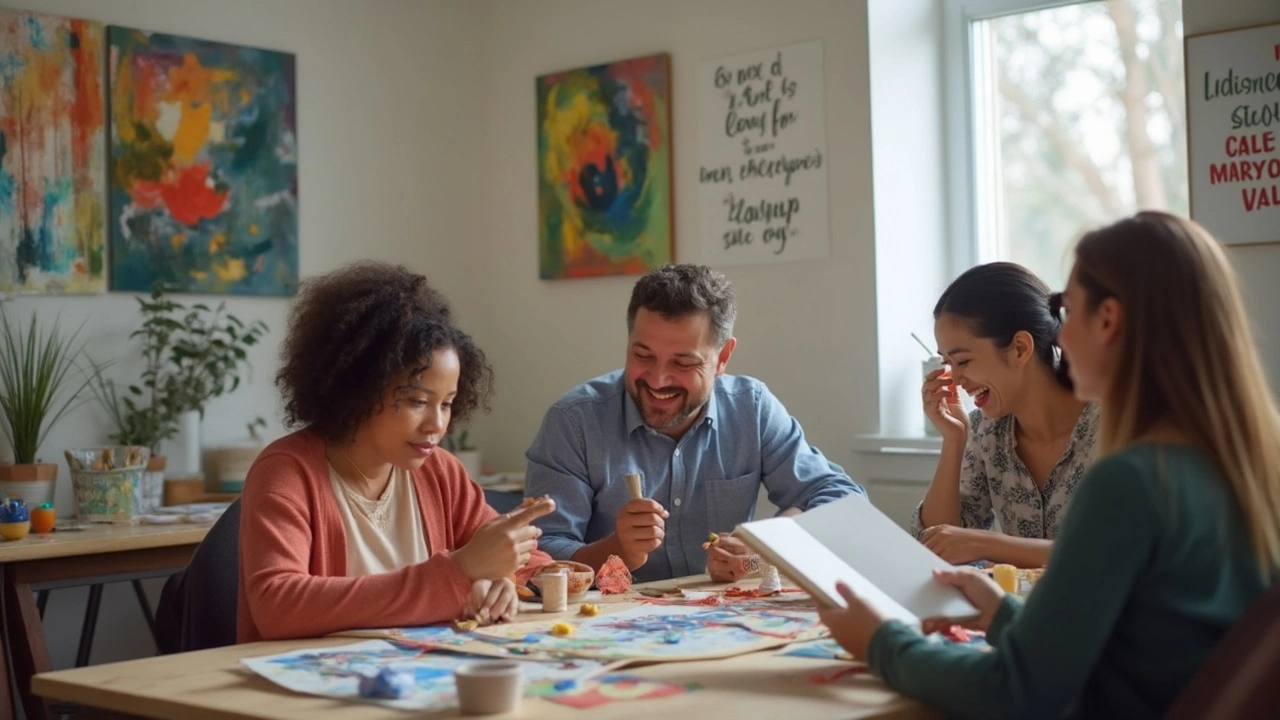Art Therapy – Creative Ways to Support Your Mental Well‑Being
Ever felt better after doodling or painting, even if you’re not an artist? That’s art therapy at work. It’s not about perfect sketches; it’s about using color, shape, and movement to process feelings. Below you’ll find what art therapy really means and how you can start using it today.
What Is Art Therapy?
Art therapy blends psychology with visual expression. A trained therapist guides you, but you can also practice solo. The goal isn’t to create a masterpiece; it’s to let the brain talk through images. When you draw a storm, you might be looking at anxiety. When you color a sunrise, you may be inviting hope.
Research shows that creating art lowers cortisol, the stress hormone, and boosts dopamine, the feel‑good chemical. Even 15 minutes of free drawing can calm a racing mind. That’s why hospitals, schools, and workplaces are adding art rooms to their wellness programs.
Practical Tips to Start Your Own Sessions
1. Choose a simple medium. A pencil, watercolors, or even clay works. You don’t need fancy supplies—just something you enjoy handling.
2. Set a timer for 10‑20 minutes. Treat it like a short workout for your emotions. No need to finish a piece; stop when the timer goes off and notice how you feel.
3. Pick a focus question. Ask yourself, “What’s bothering me right now?” or “What do I want more of?” Then let the answer appear on the paper without judging it.
4. Use prompts if you’re stuck. Try drawing a safe place, a broken object you want to fix, or a color that describes your mood today. Prompts keep the process moving.
5. Reflect briefly. After you finish, take a minute to describe what you created. Did the lines feel tight or loose? Did the colors feel bright or dark? These observations give clues about your inner state.
If you prefer guidance, many online therapists offer virtual art‑therapy sessions. They can suggest exercises tailored to your goals, whether you’re dealing with grief, anxiety, or just want more self‑awareness.
Remember, consistency beats intensity. A quick sketch each morning can be more powerful than a long session once a month. The habit trains your brain to use creativity as a coping tool.
Finally, share if you feel safe. Showing a piece to a trusted friend or therapist can deepen insight. You don’t have to display everything—just the parts you’re ready to discuss.
Art therapy is a low‑cost, low‑risk way to boost mental health. It works for kids, adults, and older adults alike. Give it a try, notice the shift, and keep the practice going. Your mind will thank you for the extra creative space you create.
-
How Art Therapy Helps Alcohol Dependence Recovery: Creative Approaches That Work
Art unlocks a different kind of healing for people recovering from alcohol dependence, offering more than traditional therapy. This article shows how creativity paves new paths for self-expression, emotional release, and personal triumph over addiction. You'll find inspiring stories, practical art ideas for recovery, and real tips to make creativity work for anyone battling alcohol problems. Explore the science, hear from those who've tried it, and discover just how powerful a paintbrush or a lump of clay can be on the journey to sobriety.
